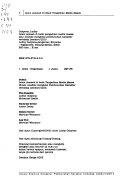
Object-oriented Programming with Java
An Introduction
For an undergraduate course in Object-Oriented Programming or a course in Intermediate Java Programming. Appealing to programmers and non-programmers alike, this complete introduction to Java shows students how to use this versatile and popular object-oriented programming language as a primary tool in many different aspects of their programming work (not just for creating programs with graphical content within Web pages), and includes complete descriptions of the fundamental elements of Java with step-by-step instructions on how to compile and run a program. Well-organized, clearly written, and visually engaging, it gives students real hands-on experience as it guides them through all of Java's functions and capabilities reinforcing their understanding with periodic reviews and helping them see Java's everyday applicability through many interesting case studies. Emphasizing the importance of good programming style particularly the need to maintain an object's integrity from outside interference it teaches students how to harness the power of Java in object-oriented programming, and enables them to create their own interesting and practical every-day applications.
- ISBN 10 : UVA:X004393680
- Judul : Object-oriented Programming with Java
- Sub Judul : An Introduction
- Pengarang : David J. Barnes,
- Kategori : Computers
- Bahasa : en
- Tahun : 2000
- Halaman : 1060
- Google Book : http://books.google.co.id/books?id=uX5GAAAAYAAJ&dq=intitle:OBJECT+ORIENTED+PROGRAMMING+(JAVA)*&hl=&source=gbs_api
-
Ketersediaan :
This comprehensive text shows readers how to use such a versatile object-oriented programming language as a primary tool in many different aspects of programming work. It is designed primarily as a first programming text.









